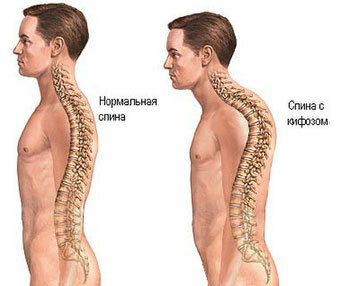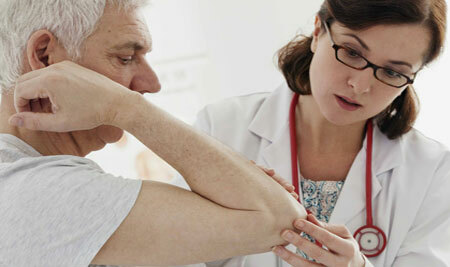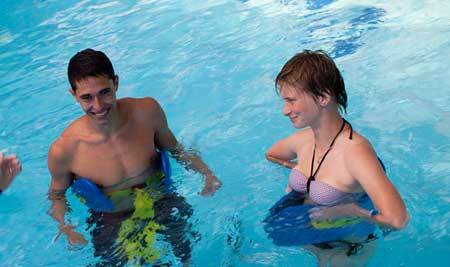A small or physiologic kyphosis of the thoracic spine, is a normal state of the body and is present in almost every person.
With increasing this bend, there is a decrease in the volume of the chest cavity and the transmission of intervertebral discs.
There are the following varieties of thoracic kyphosis:
- congenital - often becomes the main cause of leg paralysis;
- post-mortem( postural) - consequences of incorrect posture;
- post traumatic - the consequences of severe trauma;
- degenerative - deformation of vertebral bodies, loosening of ligaments;
- Scheuerman-Mau disease - changes in the form of vertebrae located in the central often spine;
- secondary kyphosis is the result of a systemic pathology of connective tissues.
Causes of thoracic kyphosis
The main reasons for the development of kyphosis include:
- incorrect posture;
- paralysis of the dorsal musculature;
- osteochondrosis;
- heredity;
- surgery and spinal injury.
Symptoms of thoracic kyphosis

This disease is manifested by the effect of hunchback, "round back".
The patient's shoulders lean forward and down, and the chest decreases in size.
The following symptoms occur:
- , the upper half of the body leans forward;
- abdominal muscles relax;
- the diaphragm is lowered.
Prolonged course of the disease leads to deformation of the vertebrae, which acquire a wedge shape.
Intervertebral cartilage undergoes destruction.
With the kyphosis of the spine, the whole musculoskeletal system suffers, since not only the skeleton, but also the back and abdominal muscles, are affected by curvature and destruction.
Anatomical chest transformation due to:
- restriction of respiratory function( decreased lung volume);
- disorders in the intercostal muscles;
- reduced the mobility of the ribs.
Diagnosis of thoracic kyphosis
To determine the disease enough to pass two simple tests:
- lean against the wall with your back, touch the back of the wall, trying not to tilt your head( kyphosis of the thoracic section will make this task difficult);
- lean forward and look at your reflection in the mirror( in this position the kyphosis will be clearly visible).
Treatment of the thoracic spine kyphosis
Kephosis of the spinal column requires complex treatment, depending on the severity and neglect of the disease.
The treatment package includes:
- drug therapy;
- manual therapy;
- exercise therapy.
Sometimes recommendations are given for wearing a corset, which prevents the further development of kyphosis and supports the spinal column.
Drug therapy
Drug therapy is used only in the initial stages of the disease, and the doctor must take into account the individual characteristics of each patient.
The following anti-inflammatory drugs are indicated for use:
- Orthophene;
- Diclofenac;
- Voltaren.
There are preparations( gels and ointments) for external use:
- Indomethacin;
- Hydrocortisone;
- Diclonac;
- Fastus.
With the removal of pain, it is advisable to use means that irritate the nerve endings:
- Menovazine;
- Efkamon;
- Asterisk.
All these drugs are on sale, and you can use them at home, after consulting with your doctor.
In a hospital environment, you may be prescribed effective NSAIDs( non-steroidal anti-inflammatory drugs) such as:
- Movalis;
- Nimika;
- Ketonal and some others.
Manual Therapy
Manual therapy( therapeutic massage) is used with an average degree of pathological kyphosis.
Treatment procedures are appointed after one day.
From patients, there are sometimes complaints about the pain that occurs after the sessions.
However, this is a good indication that the ligaments and muscles begin to take the right position, that is, the treatment has a positive effect.
After complete end of manual therapy sessions, many patients notice a new beautiful posture and the disappearance of pain in the spine.
Nevertheless, one should know that manual therapy is a rather dangerous method and can be carried out by an experienced orthopedic doctor or a vertebrologist.
Therapeutic physical training
An important part of the treatment is exercise therapy, which includes the following exercises:

- lie on the stomach, hands to bring to the shoulders. Lean on his forearms and puff his head back. Raise the chest chest, if possible, above the floor. Return to the starting position( IP);
- lie on your stomach, take a gymnastic stick and put it on the shoulder blades. Grab the gymnastic stick with the elbows folded, tilt the head back and squeeze the spine. Return to the IP;
- stand on all fours, leaning on your knees and on your hands. Lift the head, lower the thorax, pull the elbows apart. Being in this position, try to crawl at least 50 meters( steps);
- get up, legs are shoulder-width apart. Behind him, lightly press a gymnastic stick to the shoulder blades. On exhalation, we crouch. On inhalation - we return to the ip;
- get up, legs are shoulder-width apart. Press the gymnastics stick to the shoulder blades. On inspiration we raise a stick, straightening our hands. We throw our heads back. On exhalation - we return to and, n. .
With daily exercise of these exercises, you will return to health of the spine and beautiful posture.
And, it should be noted that the kyphosis of the spine of the thoracic region is strengthened, with the bend of the trunk forward.
At the same time, the kyphosis of the thoracic spine is smoothed when the trunk is unbent from the prone position on the abdomen.
This information is useful to use in the preparation of an individual complex of therapeutic physical education.
Take care of yourself.
Be Healthy!
Video: Exercises for thoracic kyphosis
 The kyphosis of the thoracic spine is characterized by the bending of the vertebral column back.
The kyphosis of the thoracic spine is characterized by the bending of the vertebral column back.



